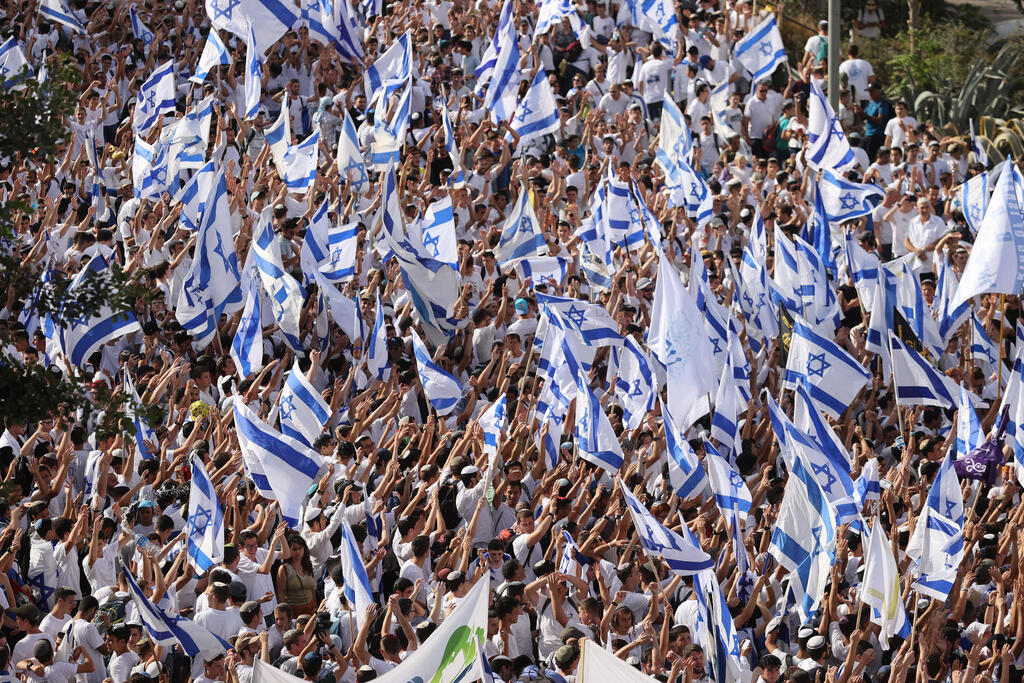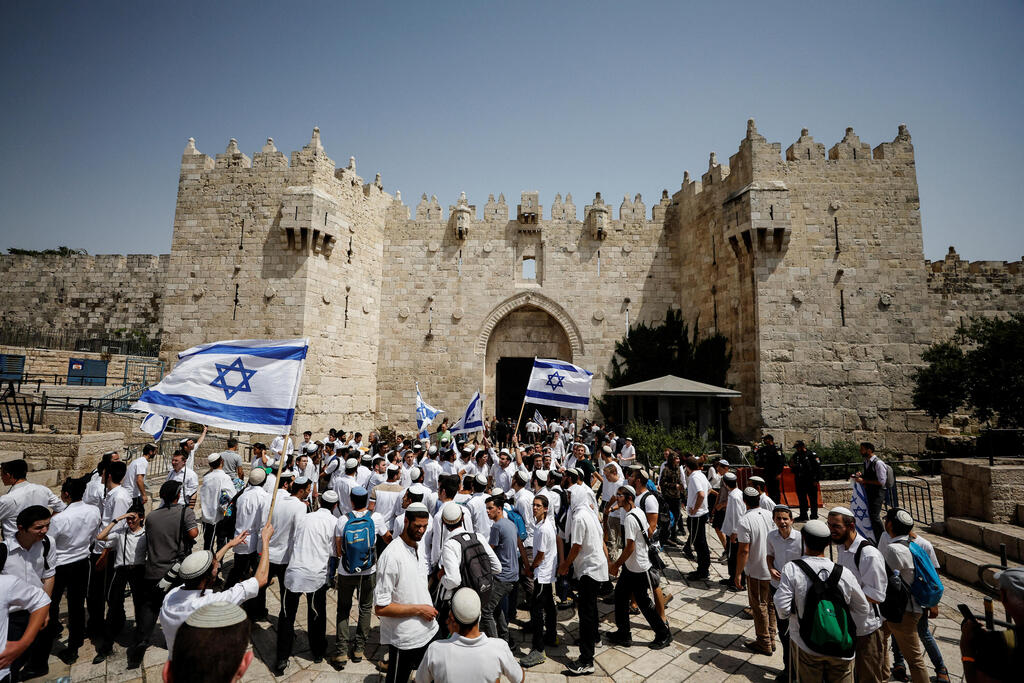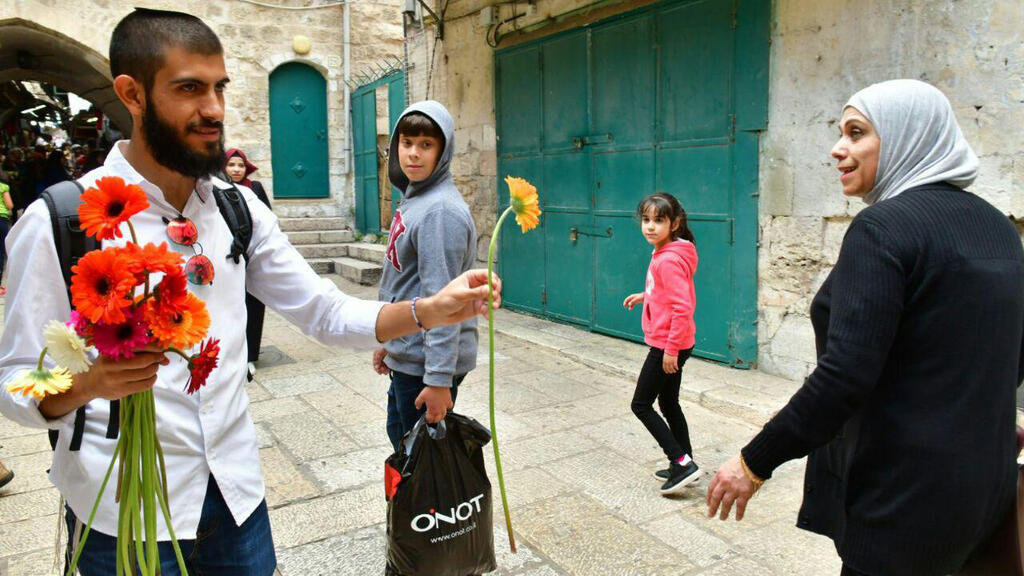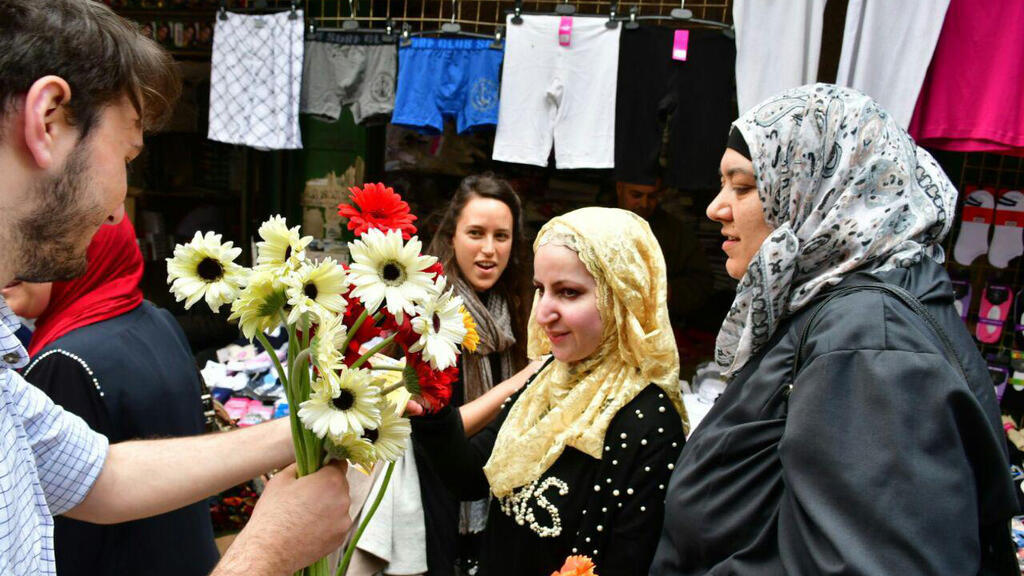Getting your Trinity Audio player ready...
Israel has been celebrating the 1967 reunification of Jerusalem in the form of Jerusalem Day for decades. The holiday celebrating the end of 19 years of Jordanian occupation is accompanied by the somewhat controversial nationalistic flag march through the capital.
Barbara Schwerd, 65, participates in the march every year. “We celebrate the miracle of the liberation of Jerusalem,” she says. “It’s really wonderful. Dancing, singing, unbridled celebration. I would never miss it.”
4 View gallery


Flag-waving marchers passing through the streets of Jerusalem on Jerusalem Day
(Photo: Alex Kolomoisky)
The traditional march in the Old City is a central feature of the celebration. The march is also the central feature of discord.
For the past decades, the march passed without incident. However, in recent years, controversy has arisen.
Schwerd likes to stand on Agron St., part of the march route before entering the Old City. “I love to watch the beautiful kids marching by and singing. Thanking God and loving being together in celebration.”
David Waimann, CEO of the religious Zionist organization Oz veShalom, is in favor of celebrating the glories of Jerusalem, but he thinks the flag march is “immoral and a provocation to the Muslims who are sensitive to Jewish displays of victory over the Arabs.” Therefore, it should not be allowed, he says.
He goes as far as to argue that it is one of the causes of last year’s conflict, the 11-day Gaza war in May 2021. “We saw what happened when there was a flag march and there was a war and people died,” he said.
Though the route was modified last year out of security consideration, Hamas still launched missiles at Jerusalem during the march, ending it shortly after it had begun. This opened the Guardian of the Walls military operation that included Muslim hostilities against Jews throughout Israel’s cities with a sizeable Arab population.
This year, the march is proceeding along the traditional route in spite of potential security issues that may arise. Yamina Party member Jeremy Saltan, 37, is marching in Jerusalem. “I recognize that this is not the smartest personal or national security decision,” he says. “I am doing so because I believe that Jerusalem Day trumps other concerns.”
18-year-old Oriya Biter is a religious teenager in the midst of her national service. For her, the flag march is the culmination of a full day of celebrations that begins when the buses bring religious school pupils to Sacher Park, a large public park in central Jerusalem.
Everyone is dressed in blue and white, Israel’s colors. From there, they begin their march toward the Old City, stopping to dance at the various stages that are erected along the way, on each stage singers and musicians.
She excitedly describes the scene: “There is a crazy huge crowd, families with small children, religious and secular people. An atmosphere of holiness.“
Biter is somewhat afraid given what happened last year, but that will not hold her back. “We could take a step back in fear and ask why we should fight for our homeland,” she says. “But this is my city.”
Two hours before the march starts, Jaffa Street, which stretches the length of central Jerusalem, is dotted with clusters of thousands of young people carrying flags and singing their way toward the Old City. Their energy is contagious.
In contrast, a small group of about 40 people gathered solemnly at Safra Square near City Hall under the auspices of Tag Meir, a coalition of 48 organizations and institutions in Israel. Tag Meir is holding its eighth annual Flower March. They marched to the Old City to hand out flowers to Arab shop owners and make a few purchases.
Long-time participant, Uri Werner-Reiss, 57, is not opposed to marching with the Israeli flag. “I also put up a flag on Independence Day,” he says. His reason for taking part in this march is to counterbalance the “hurt caused to the Arabs by bullying and incitement. It will not be resolved by handing out a few flowers,” he acknowledges, “but we are trying to say that there is a public that wants to live together, as neighbors, and not with hostility.”
While religiously observant Schwerd marches together with those carrying the Israeli flag and singing Israeli songs, she agrees in part with those handing out flowers. “This is our country, we are the indigenous people. We are back. Let us be full of joy without insulting others,” says Schwerd.
“We can express our incredible love of the land and we have to be smart and figure out how to be inclusive of everyone who loves the land. I’m not going to compromise my land; on the other hand, we can live together here in the most empowering way with dignity for everyone.”
To those who consider the flag march to be a provocation that incites Muslims to violence, Biter responds: “This is one day in the year. It is our city, the heart of the Land of Israel. We have the right to celebrate the uniqueness of Jerusalem.”




